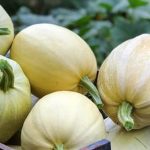Are you ready to take on the challenge of gardening in sandy soil? Sandy soil gardening vegetables can be a daunting task, but with the right knowledge and techniques, you can turn it into a successful endeavor. In this article, we will explore the ins and outs of gardening in sandy soil, including the characteristics of sandy soil, why it can be challenging, and the benefits it can offer to vegetable gardeners.
Sandy soil is characterized by its loose, coarse texture and low nutrient content. This type of soil drains quickly and has difficulty retaining moisture and nutrients, making it less than ideal for growing vegetables. However, with proper preparation and care, sandy soil can also have some advantages for gardening such as good aeration and warm temperature that certain vegetables thrive in.
In the following sections, we will delve deeper into the topic by discussing how to choose the right vegetables for sandy soil, preparing it for planting, best practices for watering vegetables in sandy soil, fertilization and nutrient management considerations specific to sandy soil conditions, pest and disease management strategies tailored to sandy soil gardening.
We will also cover seasonal considerations for sandy soil gardening and provide success stories and tips from experienced gardeners who have triumphed over the challenges of sandy soil.
Join us as we uncover the secrets to successful vegetable gardening in sandy soil.
Choosing the Right Vegetables for Sandy Soil
When it comes to gardening in sandy soil, the key to success lies in selecting the right vegetables that can thrive in these conditions. Sandy soil is characterized by its coarse texture, low nutrient retention, and fast drainage. Therefore, it’s crucial to choose vegetables that can adapt to these challenging growing conditions.
Characteristics of Vegetables That Thrive in Sandy Soil
Vegetables that are well-suited for sandy soil are those with deep root systems and those that have a high tolerance for drought. These plants are able to withstand the rapid drainage of sandy soil and access water and nutrients from deeper layers. Additionally, vegetables with shorter growing seasons are typically more successful in sandy soil as they require less time to establish their roots and produce a harvest.
Recommended Vegetable Varieties for Sandy Soil
Some of the best vegetable varieties for sandy soil include carrots, radishes, potatoes, onions, peppers, tomatoes, and melons. These vegetables have adapted well to sandy soil conditions and are more likely to thrive compared to other varieties. It’s important to research specific cultivars that have been developed or recommended specifically for growing in sandy soil.
How to Research and Select the Best Vegetables for Sandy Soil
Before starting your vegetable garden in sandy soil, it’s essential to do your research on which vegetables will perform best in such conditions. Consult with local agricultural extension offices or experienced gardeners in your area to gather recommendations on vegetable varieties suitable for sandy soils. Additionally, look for seed catalogs or online resources that provide information on the adaptability of different vegetable varieties to sandy soil environments.
By choosing the right vegetables for your sandy soil garden, you’ll set yourself up for success and ensure a bountiful harvest despite the challenges posed by this type of soil. With careful selection and cultivation practices tailored to the unique needs of sandy soil gardening vegetables, you can enjoy a productive and rewarding gardening experience.
Preparing Sandy Soil for Planting
Sandy soil is known for its fast drainage and poor nutrient retention, making it a challenging environment for gardening vegetables. However, with the right techniques and preparations, sandy soil can be improved to support a thriving vegetable garden. Here are some important steps to consider when preparing sandy soil for planting:
- Soil testing: Before planting your vegetables, it’s crucial to test the sandy soil for any nutrient deficiencies. Sandy soil tends to lack essential nutrients such as nitrogen, phosphorus, and potassium. A soil test will provide valuable information about the current nutrient levels and help you determine what amendments are needed.
- Improving soil structure: Despite its coarse texture, sandy soil can be improved by adding organic matter to enhance its structure. Incorporating materials such as compost, peat moss, or well-rotted manure can help bind the sandy particles together, promoting better water and nutrient retention.
- Enhancing fertility and moisture retention: Adding organic matter not only improves soil structure but also enhances fertility and moisture retention in sandy soil. Organic matter acts as a sponge, holding onto water and nutrients that would otherwise wash away quickly in sandy soils.
By following these preparatory steps, gardeners can significantly improve the quality of their sandy soil and create a more hospitable environment for vegetable growth. These efforts will ultimately lead to healthier plants and higher yields in the garden.
Best Practices for Watering Vegetables in Sandy Soil
When it comes to sandy soil gardening vegetables, proper watering is essential for the health and growth of your plants. Sandy soil has excellent drainage but can struggle with retaining moisture, which makes watering a crucial aspect of vegetable gardening in this type of soil.
Understanding the unique water needs of sandy soil is the first step in ensuring successful vegetable gardening. Sandy soil dries out quickly, so frequent watering is necessary, especially during periods of hot and dry weather. Additionally, proper irrigation methods such as drip or soaker hoses can help deliver water directly to the plant roots, reducing evaporation and conserving moisture.
To conserve moisture in sandy soil while also providing adequate hydration for your vegetables, consider adding organic matter to the soil. This can help improve the soil’s ability to retain water and provide essential nutrients to your plants. Mulching around vegetable plants with materials like straw or wood chips can also help prevent water evaporation from the soil surface and maintain consistent moisture levels.
Overall, successful vegetable gardening in sandy soil requires a thoughtful approach to watering that takes into account the unique characteristics of this type of soil. By understanding how sandy soil behaves and implementing proper irrigation techniques, you can ensure that your vegetable garden thrives despite the challenges posed by sandy soil.
| Watering Tips for Sandy Soil | Benefits |
|---|---|
| Use drip or soaker hoses | Deliver water directly to plant roots |
| Add organic matter to improve water retention | Enhances fertility and moisture retention |
| Mulch around plants with straw or wood chips | Prevents water evaporation from the soil surface |
Fertilization and Nutrient Management in Sandy Soil
Sandy soil presents a unique set of challenges when it comes to gardening vegetables, particularly in terms of nutrient management. The coarse texture of sandy soil allows nutrients to leach away quickly, leading to deficiencies that can stunt plant growth and reduce yields. However, with the right approach to fertilization and nutrient management, it is possible to cultivate a thriving vegetable garden in sandy soil.
Nutrient Deficiencies Commonly Found in Sandy Soil
One of the key considerations when gardening vegetables in sandy soil is addressing the specific nutrient deficiencies that are commonly found in this type of soil. Sandy soil tends to be low in essential nutrients such as nitrogen, phosphorus, and potassium, as well as micronutrients like zinc and iron. Recognizing these deficiencies early on and taking proactive steps to address them will be crucial for successful vegetable cultivation in sandy soil.
Choosing the Right Fertilizers for Sandy Soil
When it comes to fertilizing vegetables in sandy soil, selecting the appropriate types of fertilizers is essential for addressing nutrient deficiencies. Slow-release or controlled-release fertilizers can help provide a steady supply of nutrients over an extended period, reducing the risk of leaching. Additionally, choosing fertilizers specifically formulated for sandy soils can ensure that plants receive the necessary nutrients for healthy growth and development.
Organic Alternatives for Enriching Sandy Soil
For those looking to take a more sustainable and environmentally-friendly approach to nutrient management in sandy soil gardening, organic alternatives can be highly effective. Incorporating compost, aged manure, or other organic amendments into the soil can improve its fertility while also enhancing its ability to retain moisture. Utilizing cover crops and green manure can further contribute organic matter to sandy soil, promoting long-term health and productivity for vegetable crops.
By understanding the specific nutrient needs of vegetables grown in sandy soil and implementing targeted strategies for fertilization and nutrient management, gardeners can overcome the inherent challenges of this type of soil and create a flourishing vegetable garden.
Pest and Disease Management in Sandy Soil Gardening
When it comes to gardening in sandy soil, one of the challenges that gardeners face is managing pests and diseases that can affect their vegetables. Sandy soil can make plants more susceptible to certain pests and diseases due to its poor water retention and nutrient deficiencies. However, with the right strategies and precautions, it is possible to effectively manage these issues and maintain a healthy garden.
Here are some tips for pest and disease management in sandy soil gardening:
- Regularly inspect your plants for signs of pests or diseases, such as discolored leaves, holes, or unusual growth patterns.
- Use natural remedies for pest control, such as planting companion plants that repel harmful insects or using beneficial insects like ladybugs or praying mantises to control pest populations.
- Practice good garden hygiene by removing any affected plant material promptly and disposing of it properly to prevent the spread of diseases.
- Consider using row covers or protective barriers to keep pests at bay while allowing air circulation for your vegetable plants.
By being proactive and staying vigilant, you can minimize the impact of pests and diseases on your vegetable garden in sandy soil. Additionally, implementing sustainable gardening practices can also contribute to overall plant health and resilience.
Ultimately, with proper care and attention to potential issues, you can successfully manage pest and disease in sandy soil gardening vegetables. It’s important to stay informed about specific pests and diseases common in your area and be prepared with effective solutions tailored to the unique conditions of sandy soil.
Seasonal Considerations for Sandy Soil Gardening
Sandy soil gardening, while challenging, can be very rewarding with the right knowledge and strategies. When it comes to seasonal considerations for sandy soil gardening, it is important to understand the unique characteristics of this type of soil and how they can impact the growing season.
Sandy soil tends to drain quickly, which means that moisture retention can be a major concern, especially during hot and dry periods. Additionally, sandy soil also warms up faster in the spring and cools down quicker in the fall, which can affect planting and harvesting schedules.
One strategy for addressing the seasonal considerations of sandy soil gardening is to carefully plan planting and harvesting schedules based on the specific characteristics of the soil. This may involve choosing vegetables that are well-suited to sandy soil conditions and that have shorter growing seasons to ensure successful yields. Additionally, protective measures such as using mulch or row covers can help moderate temperature fluctuations and conserve moisture in sandy soil, extending the growing season.
It’s also important to consider strategies for protecting vegetables from extreme temperature fluctuations in sandy soil. For example, using raised beds or incorporating compost into the soil can help improve its ability to retain moisture and regulate temperature. Shade cloth or other types of sun protection can also be used during periods of intense heat to prevent damage to vulnerable plants. By being proactive and adaptable to seasonal changes, gardeners can maximize their success when gardening in sandy soil.
| Characteristics | Seasonal Considerations |
|---|---|
| Moisture Retention | Hot and dry periods require careful planning for watering |
| Temperature Fluctuations | Strategies such as mulching and shading may be needed for extreme temperatures |
Success Stories and Tips From Experienced Sandy Soil Gardeners
In conclusion, gardening in sandy soil can be incredibly rewarding with the right knowledge and techniques. While it certainly presents its own set of challenges, the benefits of gardening in sandy soil, such as excellent drainage and easy cultivation, make it a worthwhile endeavor for any vegetable gardener. By choosing the right vegetables, preparing the soil properly, and implementing best practices for watering, fertilization, pest management, and seasonal considerations, gardeners can have success in sandy soil gardening.
One of the most important factors in achieving success in sandy soil gardening is choosing the right vegetables. By selecting varieties that are well-suited to sandy soil conditions, gardeners can ensure that their plants will thrive and produce bountiful yields. Additionally, enriching the soil with organic matter and proper fertilization will help improve fertility and moisture retention, making it easier for vegetables to grow successfully.
Experienced sandy soil gardeners have shown that with dedication and innovation, it is possible to overcome the challenges of gardening in sandy soil and achieve impressive results. By sharing their tips and success stories, these seasoned gardeners provide valuable insights and inspiration for others who may be facing similar obstacles. With careful planning and proper care, anyone can enjoy a flourishing vegetable garden in sandy soil.

If you’re looking to get into vegetable gardening, or are just looking for some tips on how to make your current garden better, then you’ve come to the right place! My name is Ethel and I have been gardening for years. In this blog, I’m going to share with you some of my best tips on how to create a successful vegetable garden.





